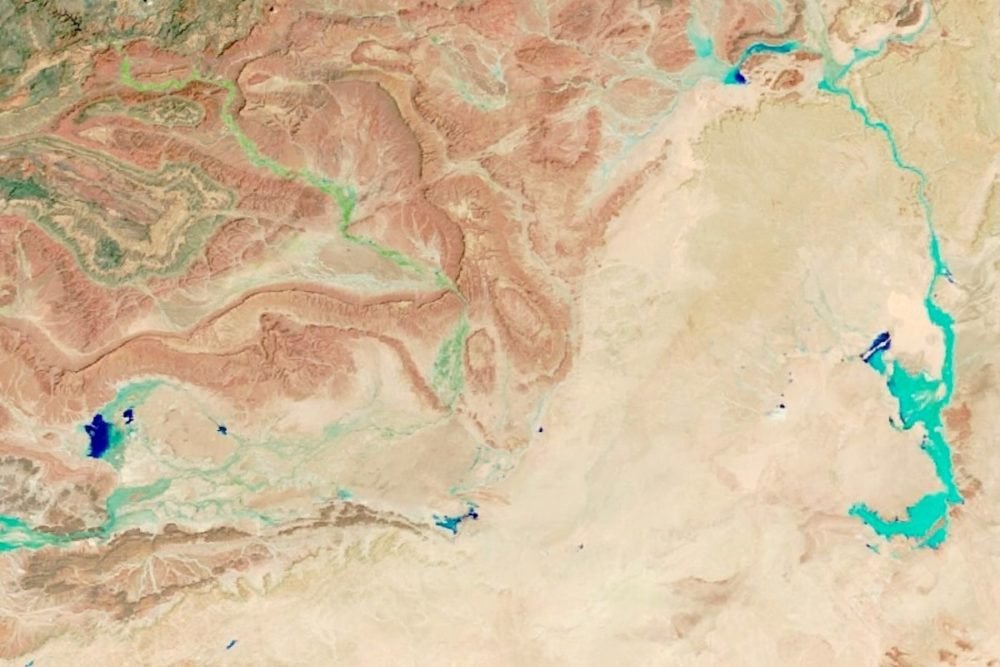A satellite image of ephemeral lakes and rivers along the border between Morocco and Algeria after heavy rains in early September. NASA
An unusual cyclone in early September drenched much of Morocco, Algeria, Tunisia and Libya, filling dry lakes and rivers. New satellite images from NASA show the impact of the deluge.
Some parts of North Africa received up to 8 inches of rain, as much as they typically receive in a year, with water flowing out of mountains and into ephemeral lakes like Sebkha el Melah in northern Algeria. As of last week, the lake covered more than 70 square miles and was more than 7 feet deep – enough water that it could take a year for the lake to dry up, reads an article published by Yale Environment 360, an American online magazine focused on environmental journalism,
According to a recent analysis, of the hundreds of storms that have hit the region since 2000, only six have dumped enough rain to fill Sebkha el Melah. Of those, only two left the lake more full than last month’s deluge.
Climate change is affecting desert rainfall. The Sahara tends to get more rain when moist air from near the equator collides with hot, dry air farther north. The latitude of this collision is shifting farther north as the planet warms, scientists say, and is likely to continue to do so for decades to come.
TunisianMonitorOnline (NejiMed)




